 Your new post is loading...
 Your new post is loading...

|
Scooped by
Ed Rybicki
May 7, 2012 3:53 AM
|
"Protalix BioTherapeutics Inc. soared in Tel Aviv trading after the biopharmaceutical company’s first product won approval from the U.S. Food and Drug Administration. Protalix expects approval to sell its Gaucher disease drug in Israel soon, Aviezer said. Israel has at least 500 patients affected with the illness, he said. The company also is awaiting a regulatory decision in the European Union.
“This is a biotechnology milestone as it it the first time the FDA has approved a product that was engineered in plant cells, as opposed to mammalian or bacterial-based systems,” Yoav Kedar, a biotechnology consultant for Clal Finance Brokerage Ltd., said in an interview. “The approval will better position the company to receive approvals in Europe, Israel and Brazil.”
Gaucher disease can cause fat to build up in the liver, spleen, bone marrow and nervous system. About 1 in 14 individuals of Ashkenazi Jewish ancestry carries the mutated gene that can cause the illness, and as many as 1 in 500 present a form of the disorder." This is a seriously big deal, and I have blogged on it here before: this is a plant-made bio-better, now licenced for human use as a therapeutic for a nasty genetic disease. It should compete well, given that other offerings are made in mammalian cells - and one manufacturer's output was recently shut down completely due to a viral infection of their cell cultures, which is what led to accelerated approval for Protalix's product. Going green...you know the rest. I thank Russell Kightley Media for the plant cell graphic

|
Scooped by
Ed Rybicki
May 7, 2012 3:37 AM
|
"HIV patients given gene therapy more than a decade ago are healthy and the altered DNA they received remains stable in their bodies, according to a study that scientists say proves the treatment may safely be tested as a way to attack other illnesses..." Good news for HIV-infected people, and possibly for HBV and HCV as well: a therapeutic intervention for persistent viral infection that does not cause harm can only be welcomed!

|
Scooped by
Ed Rybicki
May 7, 2012 3:30 AM
|
"Brazil Fights InfluenzaInside Costa RicaBrazil Health Ministry has launched a National Vaccination Campaign against flu to immunize some 24.100 million people against three viruses prevalent in South America, including the influenza A (H1N1.) " That's what we need: pre-emptive vaccination inside at-risk countries!! Now, about those Americans....

|
Scooped by
Ed Rybicki
May 5, 2012 7:50 AM
|
"When Duesberg was recently given space in Scientific American I think the blogosphere was rightly chagrinned that they would give space to a crank whose crackpot ideas are thought to be responsible for the deaths of hundreds of thousands. But it seemed at the time he had been keeping his denialism on the down low, maybe appearing to have given up on his crank view that HIV does not cause AIDS. Not so anymore. He's back, and has secured publication of a paper denying HIV/AIDS in an Italian Journal. The title, AIDS since 1984: No evidence for a new, viral epidemic - not even in Africa, seems such a denial of reality that you wonder if part of it is he can't reverse now because then he's responsible for a great many AIDS deaths, especially in South Africa. Specifically the paper is a refutation of the above linked paper discussing excess AIDS deaths likely due to rejection of anti-retroviral medications.... I can't help being personally offended by this drivel. I'm in Baltimore, with a population known to be living with HIV of 2.5%." I'm in South Africa - a whole COUNTRY where the prevalence of HIV infection is up at 11%. I am considerably more offended - in fact, I think that if there ever comes a time when AIDS denialists are cahrged fro crimes against humanity, Duesberg should be right up there. Alongside T Mbeki Esq.

|
Scooped by
Ed Rybicki
May 4, 2012 4:14 AM
|
The oncogenic potential of papillomaviruses (PVs) has been appreciated since the 1930s yet the mechanisms of virally-mediated cellular transformation are still being revealed. Reasons for this include: a) the oncoproteins are multifunctional, b) there is an ever-growing list of cellular interacting proteins, c) more than one cellular protein may bind to a given region of the oncoprotein, and d) there is only limited information on the proteins encoded by the corresponding non-oncogenic PVs. The perspective of this review will be to contrast the activities of the viral E6 and E7 proteins encoded by the oncogenic human PVs (termed high-risk HPVs) to those encoded by their non-oncogenic counterparts (termed low-risk HPVs) in an attempt to sort out viral life cycle-related functions from oncogenic functions. The review will emphasize lessons learned from the cell culture studies of the HPVs causing mucosal/genital tract cancers.

|
Scooped by
Ed Rybicki
May 4, 2012 3:55 AM
|
Profectus BioSciences Receives NIAID Grant to Develop a Vesicular Stomatitis ...Genetic Engineering News (press release)The grant will support development of a trivalent vaccine to protect against infection with all major strains of Ebola and...

|
Scooped by
Ed Rybicki
May 4, 2012 3:31 AM
|
CIO TodayReligious sites 'riskier than porn for viruses'NinemsnWeb wanderers are more likely to get a computer virus by visiting a religious website than by peering at porn, according to a study released on Tuesday. I love it: Dawkins was right! Religion IS a virus....

|
Scooped by
Ed Rybicki
May 3, 2012 5:40 AM
|
"It’s finally out. After months of will-they-won’t they and should-they-shouldn’t-they deliberations, Nature has finally published a paper about a mutant strain of bird flu that can spread between mammals." This is the Kawaoka paper, which in fact was the LESS contentious one. Ed Yong in Discover magazine comes up with four important themes from the paper, which to my mind show we were right to agitate and demand that the material be published. One: H5N1 can evolve to spread between mammals with worrying ease Two: There appear to be two traits that make for a transmissible virus – specificity and stability. Three: It’s not the mutations that matter, but what they do. Or, don’t miss the wood for the trees. Four: Wild viruses are almost there. One and four are the important points: flu viruses can evolve quickly and easily, and wild H5N1 is nearly at the point that it will leap into mammals. The virus is endemic in several countries, like Indonesia, where wild birds, tame birds, pigs and people rub shoulders on a daily basis: this is a natural melting pot for influenza virus reassortment and adaptation, that may at any moment see a pandemic virus burst out. Or not - it may as easily be a H7NX virus that will be The Big One. But it is as well to be prepared - and censorship wasn't going to allow that. Thanks @AJCann for alerting me to this.

|
Scooped by
Ed Rybicki
May 1, 2012 8:28 AM
|
"A classified briefing from U.S. intelligence officials helped persuade a majority of members of a government advisory board that the benefits of publishing two controversial H5N1 avian influenza studies outweighed the risks, according to testimony presented yesterday at a U.S. Senate hearing. The late March briefing to the National Science Advisory Board for Biosecurity (NSABB) left "the impression that the risk of misuse did not appreciably increase with full publication and there is a high likelihood of undesirable political consequences to not publishing," microbiologist Paul Keim of Northern Arizona University in Flagstaff, acting chair of NSABB, told the Committee on Homeland Security and Governmental Affairs."

|
Scooped by
Ed Rybicki
May 1, 2012 8:18 AM
|
"Influenza A virus possesses a segmented genome of eight negative-sense, single-stranded RNAs. The eight segments have been shown to be represented in approximately equal molar ratios in a virus population; however, the exact copy number of each viral RNA segment per individual virus particles has not been determined. We have established an experimental approach based on multicolor single-molecule fluorescent in situ hybridization (FISH) to study the composition of viral RNAs at single-virus particle resolution. Colocalization analysis showed that a high percentage of virus particles package all eight different segments of viral RNAs. To determine the copy number of each RNA segment within individual virus particles, we measured the photobleaching steps of individual virus particles hybridized with fluorescent probes targeting a specific viral RNA. By comparing the photobleaching profiles of probes against the HA RNA segment for the wild-type influenza A/Puerto Rico/8/34 (PR8) and a recombinant PR8 virus carrying two copies of the HA segment, we concluded that only one copy of HA segment is packaged into a wild type virus particle. Our results showed similar photobleaching behaviors for other RNA segments, suggesting that for the majority of the virus particles, only one copy of each RNA segment is packaged into one virus particle. Together, our results support that the packaging of influenza viral genome is a selective process." Influenza virus cutaway by Russell Kightley Media

|
Scooped by
Ed Rybicki
May 1, 2012 8:09 AM
|
Government ministers representing 24 African countries have officially endorsed the use of biotechnology to address the persistent food insecurity and poverty across the continent. The landmark declaration was made during the 2nd Annual Dialogue of Ministers of Agriculture, Science and Technology held under the auspices of the Government of Ghana and Forum for Agricultural Research in Africa (FARA), on 18-19 April, 2012. The forum is primarily convened to share ideas and agree on collective actions towards enhancing agricultural productivity in Africa. The joint declaration was made through a joint communiqué signed by all delegates at the end of the meeting. Another significant resolution at the forum was the call for the establishment of an Innovation Fund for Agricultural Transformation (IFAT) to generate funds for all stakeholders within the agricultural value chain with an added advantage of insurance to the farmers. Showing the way...!

|
Scooped by
Ed Rybicki
April 30, 2012 8:15 AM
|
Endogenous retroviruses (ERVs) differ from typical retroviruses in being inherited through the host germline and therefore are a unique combination of pathogen and selfish genetic element. Some ERV lineages proliferate by infecting germline cells, as do typical retroviruses, whereas others lack the env gene required for virions to enter cells and thus behave like retrotransposons. We wished to know what factors determined the relative abundance of different ERV lineages, so we analyzed ERV loci recovered from 38 mammal genomes by in silico screening. By modeling the relationship between proliferation and replication mechanism in detail within one group, the intracisternal A-type particles (IAPs), and performing simple correlations across all ERV lineages, we show that when ERVs lose the env gene their proliferation within that genome is boosted by a factor of ∼30. We also show that ERV abundance follows the Pareto principle or 20/80 rule, with ∼20% of lineages containing 80% of the loci. This rule is observed in many biological systems, including infectious disease epidemics, where commonly ∼20% of the infected individuals are responsible for 80% of onward infection. We thus borrow simple epidemiological and ecological models and show that retrotransposition and loss of env is the trait that leads endogenous retroviruses to becoming genomic superspreaders that take over a significant proportion of their host's genome. I love it: retroviruses that choose to spread WITHIN a cell's genome, rather than between cells. Safe little niche, as long as it keeps dividing!

|
Scooped by
Ed Rybicki
April 21, 2012 7:07 AM
|
"Hanoi has asked the World Health Organization for help to cure a virulent disease affecting children. Symptoms include blistering on hands, feet and mouths accompanied by high fever and eventual organ failure. Nineteen children died from the illness in 2011 alone.
The virus spreads through direct contact with an infected person’s oral discharges or saliva, the fluid from burst blisters or the stool of infected persons.
The Red Cross mission in Vietnam reports the disease has already infected over 28,000 children this year, which is more than 10 times the number of infected children in the same period last year.
According to the International Federation of Red Cross and Red Crescent Societies (IFRC), last year a record 110,000 children became infected, with 169 deaths.
The hand, foot and mouth disease (HFMD) disease mostly affects children under three years old (80 per cent of totals cases) the Red Cross said. There is no known treatment for HFMD." The virus is EV71, a picornavirus similar to the polioviruses and hepatitis A virus - so hardly a "mystery virus". There are also a number of vaccines in the pipeline for the disease, including one highlighted here a while ago.
|

|
Scooped by
Ed Rybicki
May 7, 2012 3:40 AM
|
Rapid production of influenza vaccine antigen is an important challenge when a new pandemic occurs. Production of recombinant antigens in plants is a quick, cost effective and up scalable new strategy for influenza vaccine production. In this study, we have characterized a recombinant influenza haemagglutinin antigen (HAC1) that was derived from the 2009 pandemic H1N1 virus and expressed in tobacco plants. Volunteers vaccinated with the 2009 pH1N1 oil-in-water adjuvanted vaccine provided serum and lymphocyte samples that were used to study the immunogenic properties of the HAC1 antigen in vitro. By 7 d post vaccination, the vaccine fulfilled the licensing criteria for antibody responses to the HA detected by haemagglutination inhibition and single radial hemolysis. By ELISA and ELISPOT analysis we showed that HAC1 was recognized by specific serum antibodies and antibody secreting cells, respectively. We conducted a kinetic analysis and found a peak of serum HAC1 spec antibody response between day 14 and 21 post vaccination by ELISA. We also detected elevated production of IL-2 and IFNγ and low frequencies of CD4+ T cells producing single or multiple Th1 cytokines after stimulating PBMCs (peripheral blood mononuclear cells) with the HAC1 antigen in vitro. This indicates that the antigen can interact with T cells, although confirming an effective adjuvant would be required to improve the T-cell stimulation of plant based vaccines. We conclude that the tobacco derived recombinant HAC1 antigen is a promising vaccine candidate recognized by both B- and T cells. Fraunhofer USA, waving the Green Vaccine flag: way to go....

|
Scooped by
Ed Rybicki
May 7, 2012 3:35 AM
|
British biotechnology start-up Oxitec wants to start U.S. tests of a new weapon in the war on dengue fever: genetically modifying mosquitoes that carry the disease so that their progeny self-destruct. Dengue, endemic in more than 100 countries, has begun to appear in the continental United States, with local cases occurring in Key West, Fla., in 2009 and 2010 and in Miami last year. The virus afflicts as many as 100 million people a year globally, about 20 times the number of serious influenza cases, according to the World Health Organization (WHO). In its worst form, dengue can cause severe flu-like symptoms and fatal bleeding. Oxitec has released its GM bugs in Malaysia, the Cayman Islands and Brazil. A proposed trial in Key West has met with resistance from communities who oppose genetic modification and with confusion over regulatory oversight. Still, with no vaccines to prevent dengue and no drugs to treat the disease so painful it's known as "break-bone fever," the approach is seen as an increasingly viable option to limit infections. "It is a promising technology," says James Logan, a lecturer at the London School of Hygiene and Tropical Medicine who studies the control of disease-carrying insects. "If you stop us being bitten, you stop the disease from being transmitted."

|
Scooped by
Ed Rybicki
May 7, 2012 3:28 AM
|
The World Health Organization suggests that any HIV infected person should be given immediate treatment to reduce the risk of transmission of the virus to his/her partner.

|
Scooped by
Ed Rybicki
May 5, 2012 7:43 AM
|
"Background
During a global influenza pandemic, the vaccine requirements of developing countries can surpass their supply capabilities, if these exist at all, compelling them to rely on developed countries for stocks that may not be available in time. There is thus a need for developing countries in general to produce their own pandemic and possibly seasonal influenza vaccines. Here we describe the development of a plant-based platform for producing influenza vaccines locally, in South Africa. Plant-produced influenza vaccine candidates are quicker to develop and potentially cheaper than egg-produced influenza vaccines, and their production can be rapidly upscaled. In this study, we investigated the feasibility of producing a vaccine to the highly pathogenic avian influenza A subtype H5N1 virus, the most generally virulent influenza virus identified to date. Two variants of the haemagglutinin (HA) surface glycoprotein gene were synthesised for optimum expression in plants: these were the full-length HA gene (H5) and a truncated form lacking the transmembrane domain (H5tr). The genes were cloned into a panel of Agrobacterium tumefaciens binary plant expression vectors in order to test HA accumulation in different cell compartments. The constructs were transiently expressed in tobacco by means of agroinfiltration. Stable transgenic tobacco plants were also generated to provide seed for stable storage of the material as a pre-pandemic strategy. Results
For both transient and transgenic expression systems the highest accumulation of full-length H5 protein occurred in the apoplastic spaces, while the highest accumulation of H5tr was in the endoplasmic reticulum. The H5 proteins were produced at relatively high concentrations in both systems. Following partial purification, haemagglutination and haemagglutination inhibition tests indicated that the conformation of the plant-produced HA variants was correct and the proteins were functional. The immunisation of chickens and mice with the candidate vaccines elicited HA-specific antibody responses. Conclusions
We managed, after synthesis of two versions of a single gene, to produce by transient and transgenic expression in plants, two variants of a highly pathogenic avian influenza virus HA protein which could have vaccine potential. This is a proof of principle of the potential of plant-produced influenza vaccines as a feasible pandemic response strategy for South Africa and other developing countries." I have mentioned time and again that going green is the sensible thing to do: here is a concrete example of how my research group is trying to go about it. This is a very sensible technology for rapid-response vaccine production, and especially for emerging or orphan or pandemic virus threats. We got really good expresion levels of H5N1 HA protein via transient expression in plants, and have already started on pandemic H1N1 HA expression. Let's hope some governmental types in SA take some notice! I thank Russell Kightley Media for the specially-commissioned graphic of budded HA-only VLPs

|
Scooped by
Ed Rybicki
May 4, 2012 4:06 AM
|
Seasonal influenza A(H1N1) and A(H3N2), 2009 pandemic A(H1N1) (H1N1pdm) and highly pathogenic avian influenza (HPAI) A(H5N1) viruses were tested with guinea pig sera negative for antibodies against all of these viruses as evaluated by hemagglutination-inhibition and microneutralization assays. In the presence of serum inhibitors, the infection by each virus was inhibited differently as measured by the amount of viral nucleoprotein produced in Madin-Darby canine kidney cells. The serum inhibitors inhibited seasonal influenza A(H3N2) virus the most, while the effect was less in seasonal influenza A(H1N1) and H1N1pdm viruses. The suppression by serum inhibitors could be reduced by heat inactivation or treatment with receptor destroying enzyme. In contrast, all H5N1 strains tested were resistant to serum inhibitors.

|
Scooped by
Ed Rybicki
May 4, 2012 3:35 AM
|
We've all heard the myths and hypotheses about the origins of the epidemic caused by the HI virus, but a new book, “Tinderbox: How the West Sparked the AIDS Epidemic and How the World Can Finally Overcome It”, sheds more light on where it all began. I've covered this before, but it's a nice review - complete with spoilers like how Beatrice Hahn and team have shown that a chimpanzee SIV from Cameroon is the closest relative of HIV-1 group M viruses. The gun doesn't smoke more than that.

|
Scooped by
Ed Rybicki
May 4, 2012 3:30 AM
|
“On April 27th, after much toing and froing, the Dutch government gave Ron Fouchier of the Erasmus Medical Centre in Rotterdam permission to submit his paper on bird flu to Science." And so it FINALLY comes to pass - two papers that SHOULD have been published weeks ago, will see the light. Graphic by Russell Kightley Media

|
Scooped by
Ed Rybicki
May 1, 2012 8:34 AM
|
"Dr. Millman also helped create a test for hepatitis B that substantially reduced the risk of infection from blood transfusions. Hepatitis B is one of five viruses known to cause liver inflammation; it can lead to cancer. By some estimates, more than 350 million people are carriers, especially in Asia and Africa. The virus spreads as H.I.V. does — via blood, semen and other bodily fluids — but is more infectious." The first virus-like particle vaccine - albeit non-recombinant, because it was purified from plasma obtained from infected people.

|
Scooped by
Ed Rybicki
May 1, 2012 8:23 AM
|
“The animal actually makes the vaccine inside its body by producing the FMD protein necessary to create an immune response,” Dr. Rodriguez said, according to the BBC. “It’s a very good innovation – the most effective way to date and very promising technology. I think it’s going to revolutionize the way we look at FMD vaccines around the world today.” So a DNA vaccine, then? Hardly revolutionary - but ANYTHING that changes the primitive attitude governments have to the use of FMDV vaccines is to be welcomed.

|
Scooped by
Ed Rybicki
May 1, 2012 8:11 AM
|
This article is published in partnership with the National Coalition of STD Directors (NCSD) as part of our joint series on STD Awareness.
As supporters of STD prevention, you are likely aware that April is designated as STD Awareness Month. No, but I'm happy to spread the word!

|
Scooped by
Ed Rybicki
April 30, 2012 8:35 AM
|
"Bacteria and their viruses (called bacteriophages, or phages), have been found in virtually every ecological niche on Earth. Arid regions, including their most extreme form called deserts, represent the single largest ecosystem type on the Earth's terrestrial surface. The Namib desert is believed to be the oldest (80 million years) desert. We report here an initial analysis of bacteriophages isolated from the Namib desert using a combination of electron microscopy and genomic approaches. The virus-like particles observed by electron microscopy revealed 20 seemingly different phage-like morphologies and sizes belonging to the Myoviridae and Siphoviridae families of tailed phages. Pulsed-field gel electrophoresis revealed a majority of phage genomes of 55-65 kb in length, with genomes of approximately 200, 300, and 350 kb also observable. Sample sequencing of cloned phage DNA fragments revealed that approximately 50% appeared to be of bacterial origin. Of the remaining DNA sequences, approximately 50% displayed no significant match to any sequence in the databases. The majority of the 16S rDNA sequences amplified from DNA extracted from the sand displayed considerable (94-98%) homology to members of the Firmicutes, and in particular to members of the genus Bacillus, though members of the Bacteroidetes, Planctomycetes, Chloroflexi, and delta-Proteobacteria groups were also observed." This serves as a neat, if slightly dated, little introduction to my latest endeavour - and an account of a field trip this last week into the Namib Desert. I was fortunate enough some time ago to have been invited by Don Cowan, presently of University of Pretoria, to accompany his team to the Gobabeb Research Station inland of Walvis Bay, in Namibia's Namib Desert. They work on extremophiles, and the Namib is a great environment for mining bugs that can withstand high salt and temperatures and severe desiccation - oh, and photosynthesise underground, hiding under semi-tranlucent quartz rocks embedded in the surface soil. The thinking was that, given my long-time interest in viral diversity and newly-acquired means to do oceanic viromics, I would be interested and even of some help. And so it has come to pass: I will have my very own hypolith (=rock-colonising blue-green algae) scrapings and the result of diafiltration and concentration of washings of a good few kilos of red dune sand to play with as far as virus genome sequencing and even EM and analytical centrifugation go. We will have fun in the coming months...that, and we will obviously HAVE to go back to Gobabeb, to further investigate whatever it is we find. A terrible, harsh place, but SOMEONE has to go there...so I'll take the pain. B-) Phage graphic courtesy of Russell Kightley Media

|
Scooped by
Ed Rybicki
April 21, 2012 7:08 AM
|
"Last year was the worst year for measles in the U.S. in 15 years, health officials said Thursday. There were 222 cases of measles, a large jump from the 60 or so seen in a typical year. Most of the cases last year were imported -- either by foreign visitors or by U.S. residents who picked up the virus overseas. U.S. children have been getting vaccinated against the measles for about 50 years. But low vaccination rates in Europe and other places resulted in large outbreaks overseas last year. So far this year, 27 U.S. cases have been reported and it's too early to gauge whether 2012 will be as bad as last year. But with large international events like the London Olympics coming up, health officials are urging everyone -- particularly international travelers -- to make sure they're fully vaccinated." And so it begins...the collapse of what used to be near-universal anti-measles vaccination, resulting in re-importation of the virus to places where it had almost been eradicated.
|



 Your new post is loading...
Your new post is loading...



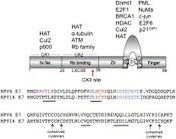

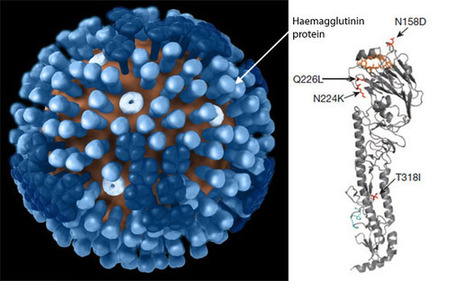



![Vietnam's new war: Incurable mystery virus [=EV71] kills 19 kids to date — RT | Virology News | Scoop.it](https://img.scoop.it/f3P1FhbOWzfHo4P1eOPGGDl72eJkfbmt4t8yenImKBVvK0kTmF0xjctABnaLJIm9)
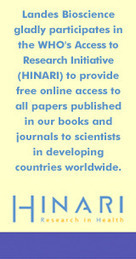
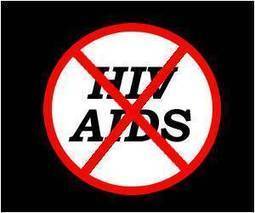
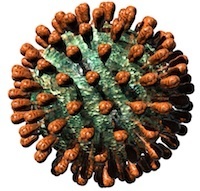



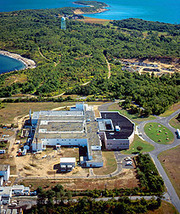

![An examination of the bacteriophages and bacteri... [J Microbiol. 2008] - PubMed - NCBI | Virology News | Scoop.it](https://img.scoop.it/73Teglmc7Ihls6XQWDaZazl72eJkfbmt4t8yenImKBVvK0kTmF0xjctABnaLJIm9)




